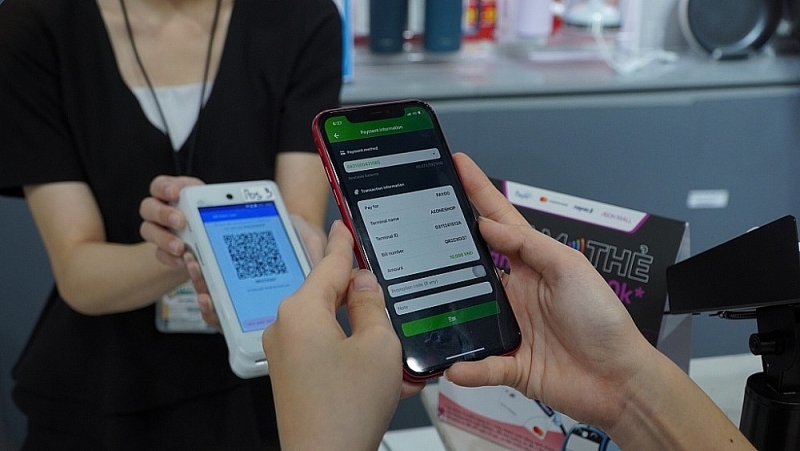 |
| Cashless payment through QR codes has grown steadily and continuously in recent years |
Among them, QR payments still lead in growth rate with an increase of 2.5 times, followed by international card payments with an increase of 64%, domestic cards increased by 7%. Of which, contactless payment via NFC is more popular, accounting for more than 65% of total card transactions.
According to Payoo, the popularity of cashless payment is the result of efforts from the Government, banks, financial institutions and response from users. However, accompanying the development of cashless payments are new risks that require both users and banks and payment intermediaries to make updates to ensure safety.
Payoo said that cashless payment through QR codes seems to have been “popular” to every person, with steady and continuous growth, reaching an average of three times/year in the past three years. The proportion of QR payments in forms of payment in many fields exceeds 30%.
Among them, the top five fields with the highest number of QR transactions in order are: food services; supermarkets and convenience stores; fashion, cosmetics; entertainment (movie tickets, plays, music…), furniture and household appliances, other retail stores.
With those impressive results, in 2024, more comprehensive QR code development is being promoted by investment units. Banks and payment intermediaries have also launched many convenient QR payment application solutions not only for large businesses but also suitable for small and medium-sized businesses.
However, the more QR payments develop, the more frauds based on this form increase, even though users and businesses are aware of increasing vigilance. For example, cases where a store’s QR was overwritten occurred in a few places, causing buyers to not pay attention to scan the fake QR and transfer money to the wrong account, causing damage to the business.
Another common form of fraud is fake payment images, where the seller looks at a fake screen with payment information and does not have time to check again before delivering the goods to the buyer. Or to check, the buyer has to wait for the staff to open the phone, go to the banking application to check the money into the account before delivery. In case two or three buyers pay at the same time, the staff will be confused and take time to determine.
As a leading fintech unit in the payment ecosystem, in addition to investing in infrastructure and security, Payoo always works directly with merchants to provide solutions to prevent paste of fake QR code by use electronic devices to automatically generate different QR codes for each transaction, or display the QR code right on the POS device for customers to scan the code accurately. Businesses need to consider between choosing a cheap solution such as printing a QR code that is easily overwritten or choosing a reputable solution to protect themselves and their customers.
On the Government’s side, the State Bank has regularly issued documents directing the entire industry on enhancing security and safety of payment activities, requiring credit institutions and payment intermediaries to review internal regulations and procedures.
On July 1, according to Decision 2345/QD-NHNN of the State Bank, money transfer of over VND10 million /time or over VND20 million/day must authenticate the transaction with biometrics. This is also a timely move by the Government to help prevent the use of unidentified accounts to serve the purposes of deception, fraud, and appropriation of money, protecting users from the risk of losing money.
Banks and payment intermediaries have also continuously sent advanced warnings to all customers, recommending customers increased vigilance and being ready to “sprint” to add authentication of biometrics from July 1 to increase safety and protect users’ financial information.
